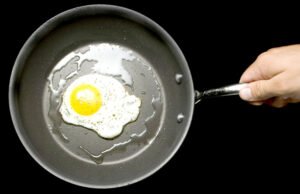As an Amazon Associate, I earn from qualifying purchases at no extra cost to you.
Dishwasher 1-Hour Wash vs Normal: Expert Guide Your Need
I once rushed dinner cleanup before friends arrived, thinking the quick wash would be my hero. But when I pulled plates out, a few had tiny food spots, and I quietly scrubbed them fast. Moments like this make you wonder, right? Which cycle is truly worth it, and when? This comparison often confuses people, especially when time feels tight.
For faster evenings, choose the dishwasher 1-hour wash vs normal cycle wisely. Use 1-hour when dishes are lightly soiled and you need quick turnaround; rely on normal for everyday meals with mixed mess levels. Always scrape food bits before a short cycle and avoid overloading. Remember, even though short cycles save time, normal cycles clean deeper, use heat more efficiently, and protect delicate items better.
Understanding How Both Cycles Work in Real Homes
When thinking about dishwasher 1-hour wash vs normal cycles, it helps to see how they work, not just what buttons say. The 1-hour wash runs shorter, uses stronger spray pressure, and finishes faster. Meanwhile, the normal cycle uses sensors, longer soak times, and controlled heat to break down grease. A friend once told me she trusts the normal cycle for lasagna night because it always lifts sticky cheese.
However, when you rush through the evening and simply want plates ready fast, a short cycle feels tempting. Many people grab it after light lunches or snacks, especially when dishes don’t look messy. Just remember, shortcuts in cleaning sometimes show up later. I once pulled out a coffee mug still smelling faintly like yesterday’s brew, and that moment made me switch back to normal for mugs.
Moreover, normal cycles balance power and water better than people expect. Dishwashers smartly adjust based on soil sensors, which means you often save more energy than running multiple fast cycles. Think of it like laundry—a quick spin might refresh, but a full wash handles true dirt. It’s similar logic here, especially when cooking greasy foods like curry or garlic butter chicken.
Still, this doesn’t make one option universally better. Every kitchen has its rhythm, and routines shift. So it’s smart to look at what’s actually on your plates rather than defaulting to the same button. Pay attention to how often you rinse dishes before loading, because that small habit can change which cycle performs better for you overall.
- 1-hour uses speed and pressure; normal uses sensors and heat
- Normal fits greasy messes better
- Short cycle helps lightly used dishes
- Personal habits affect results
When to Use the 1-Hour Cycle for Best Results
Choosing dishwasher 1-hour wash vs normal is easier when you understand timing. The 1-hour cycle shines when dishes are lightly used, like after sandwiches, salads, or breakfast. If you’re hosting and need plates quickly between meals, it’s a handy lifesaver. I often use it after brunch when dishes only touched fruit and toast crumbs, so everything comes out fresh.
However, it’s not magic. You’ll need to scrape and sometimes rinse bits first, especially sticky sauces or egg. Think about scrambled eggs coating forks; they harden fast, and short washes struggle. Whenever I skip rinsing after eggs, I end up annoyed later. So while this cycle helps busy evenings, it’s still teamwork between you and the machine.
Additionally, the 1-hour cycle typically uses more energy and water to push speed. That tradeoff surprises many people who assume “shorter means cheaper,” but cleaning fast takes force. So even though it feels efficient time-wise, it isn’t always efficient resource-wise. Consider it like microwaving food: fast but not always ideal for heavy meals.
Despite that, the 1-hour cycle is perfect for tidy habits. If you have kids who use cups constantly or live alone and run small loads often, try it. It prevents odors from building up while still cleaning well. Sometimes convenience wins, especially when you just finished eating and don’t feel like staring at dirty plates another minute.
- Best for light soil or quick hosting needs
- Scrape food first for cleaner results
- Not always energy-efficient despite speed
- Great for small daily loads
When Normal Cycle is the Smarter Everyday Choice
Comparing dishwasher 1-hour wash vs normal for daily life often points toward the normal cycle. It’s built for mixed loads—greasy pans, sauce bowls, sticky forks. For example, after taco night with cheese, salsa, and oily pans, the normal cycle cleaned everything beautifully, while I know a short cycle would’ve left smear marks. That reliability feels worth the time most days.
Besides, modern dishwashers use smart sensors during normal mode. They adjust spray time and heat based on dirt levels, almost like they “read the room.” I find that helpful because some days we cook heavy, and other days we barely touch dishes. Letting the dishwasher decide removes decision fatigue, which is surprisingly refreshing.
Another point people forget: heat matters. Normal cycles usually increase temperature enough to break down grease and sanitize. This is helpful after handling raw meat or sticky sauces. I remember cooking butter chicken and marinating meat, and trust me, I didn’t want shortcuts. The normal cycle gave me peace knowing bacteria and smell were gone.
And while it feels slower, use the time to relax, like enjoying a quiet tea or finishing a show. I see it like slow cooking—steady wins over speed for deep cleaning. So if you meal prep or cook daily, normal becomes your dependable partner rather than a slow inconvenience.
- Handles greasy and sticky foods
- Sensors help save energy long-term
- Higher heat kills bacteria
- Perfect for busy cooking households
Cleaning Quality Differences You Will Notice
In the dishwasher 1-hour wash vs normal debate, cleaning quality often decides the winner. The normal cycle gives you that restaurant-ready shine when fully loaded with real meal dishes. Think dried oatmeal bowls, pasta plates, or buttery baking trays. I once tried the 1-hour cycle on a pan with baked-on cheese, and it needed a second run—lesson learned quickly.
Meanwhile, a 1-hour wash handles “day-to-day” dirt well enough as long as it’s fresh. So if you load right after eating, it can surprise you with solid results. But if dishes sit all day and food dries, normal wins by miles. I caught myself trying to justify speed once, but seeing crumbs still stuck changed my mood fast.
Moreover, glassware clarity improves on normal cycles. Heat and longer rinses help prevent spots and cloudy cups. If you drink coffee or tea daily, you’ll appreciate this because stains stick easily. My mugs always look brighter with normal mode, and guests notice clean glasses too, which feels nice.
However, don’t feel guilty if you choose convenience sometimes. Life has those tired evenings where fast is enough, and perfect isn’t required. Just stay mindful—if you want spotless dishes without rewashing, normal cycle serves you better. Over time, you’ll naturally learn which meals need which cycle.
- Normal gives spotless shine and deeper clean
- Quick wash works for fresh, light messes
- Glass looks clearer with normal
- Choose based on how messy dishes are
Energy and Water Use You Should Know
Thinking about dishwasher 1-hour wash vs normal also means thinking about bills and resources. Normal cycles surprisingly use less water and energy overall because they run efficiently and slowly. They allow detergent time to dissolve and enzymes to break food properly. A manufacturer once explained longer cycles aren’t “wasting time”—they’re saving power through smarter cleaning.
In contrast, the 1-hour wash forces faster spray and heat to finish quickly. That burst of power can mean higher energy use, even if time is short. So while it feels efficient for your schedule, it’s not always ideal for long-term utility costs. It reminds me of turning AC to maximum to cool fast—quick relief, but not gentle on the bill.
Additionally, if you run the 1-hour cycle and dishes still look dirty, you may run it twice. That means double resources, double time, and double frustration. I did that once on a busy evening, thinking I’d save time. Instead, I stood hand-scrubbing plates like it was 1998, regretting not choosing normal in the first place.
Yet, if you load mostly cups, bowls, and snack plates, the difference feels smaller. Light users benefit more with short cycles because there’s simply less dirt to fight. So your dishwasher habits play a huge role in how much you save or spend. Think about your routine honestly before picking your default.
- Normal cycle saves water and energy long-term
- 1-hour uses extra power for speed
- Rewashing wastes more resources
- Light dish users benefit most from quick mode
Best Loading Tips for Each Cycle
No matter how you compare dishwasher 1-hour wash vs normal, loading technique changes everything. When using 1-hour wash, avoid packing dishes tightly. Let water spray reach every corner, especially cups and bowls. I learned the hard way that stacking bowls creates hidden spots, and quick cycles don’t forgive poor placement.
On the other hand, the normal cycle can handle fuller loads because water and heat work longer. Still, don’t stack plates or block sprayers. Tall cutting boards can block spray arms, so place them on the side instead. Anytime I forget, plastic lids always come out wet or food bits cling to forks.
Scraping food first helps both cycles, but it matters more for the 1-hour wash. Normal cycles soften food over time, while quick cycles don’t get that soaking luxury. So give plates a quick scrape with a spoon. It takes seconds and saves annoyance later when unloading.
Lastly, don’t forget the detergent factor. Pods work great for normal cycles, but liquid or powder may dissolve quicker for 1-hour cycles. This small adjustment helps water pick up detergent earlier during fast cleaning. Try both and see what fits your kitchen rhythm—it’s satisfying when dishes come out spotless without effort.
- Avoid cramped loading on short cycles
- Normal handles full loads but still needs space
- Scrape food before any cycle
- Match detergent type to cycle speed
Final Thoughts
Choosing between dishwasher 1-hour wash vs normal depends on your kitchen routine. Quick cycles save time on light messes, while normal cycles protect you from rewashing and offer deep clean confidence. Pay attention to what you cook, how long dishes sit, and how you load. Once you notice these habits, picking the right button becomes second nature and keeps your dishes consistently clean.
| Feature / Situation | 1-Hour Wash | Normal Cycle |
|---|---|---|
| Best For | Light, fresh messes | Daily full loads, sticky food |
| Cleaning Strength | Moderate | Deep and thorough |
| Energy Use | Higher per cycle | Lower overall |
| Water Use | Often higher | Efficient with sensors |
| Time Taken | ~60 minutes | 2–3 hours |
| Glass Care | Good for quick refresh | Best clarity and stain removal |
| Recommended Detergent | Liquid/powder | Pods or any type |
| Best Scenario | Quick turnaround days | Cooking-heavy households |
Frequently Asked Questions (FAQs)
Is it bad to always use the 1-hour wash?
It’s not necessarily bad to use the 1-hour wash often, but you should be mindful of what you’re cleaning. Lightly used dishes like breakfast plates and snack bowls usually do fine. However, greasy pots, cereal bowls with dried milk, or sauce-covered forks may not fully clean. Over time, running a short cycle for heavy soil can lead to rewashing, which wastes energy and water. To avoid frustration, use 1-hour for days when dishes are fresh and simple. And if you cook often, mix in normal cycles to keep dishes spotless.
Can the 1-hour cycle damage delicate dishes?
The 1-hour cycle usually uses stronger spray pressure to clean quickly, so delicate items like thin wine glasses or hand-painted plates may wear faster. It’s similar to scrubbing something quickly—you might clean it, but the force isn’t gentle. So for fragile dishes, choose the normal cycle because it uses heat and time rather than pure power. If you’re unsure, check your dishwasher manual, and when in doubt, hand-wash delicate items. A little caution keeps your favorite pieces safe longer.
Do I save money by using the 1-hour wash?
You may think shorter time means saving money, but 1-hour cycles often use more energy and water to clean fast. It’s like sprinting—you burn more energy in less time. Meanwhile, normal cycles stretch cleaning over longer periods with smart sensors that adjust for soil levels. So in many cases, normal is cheaper in the long run. If you use quick cycles frequently, make sure dishes aren’t heavily soiled to avoid running cycles twice, which drives costs up.
Is it okay to pre-rinse before both cycles?
Yes, but how much you rinse depends on the cycle. For the 1-hour wash, giving plates a quick scrape or rinse helps a lot because there’s no long soak. For normal cycles, a scrape is often enough since sensors and hot water break down residue. Rinsing too much can sometimes trick sensors into thinking there’s no dirt, leading to a lighter wash. So keep it balanced—scrape chunks, don’t scrub clean. Let the dishwasher do its job, and you’ll get better results with less effort.
Can dishes dry well in the 1-hour wash?
Many dishwashers don’t fully dry dishes in the 1-hour cycle because they shorten the heated drying period or rely on air drying. So you may find damp cups or wet plastic containers. In a normal cycle, the dry time usually runs longer, reducing water droplets. To help the quick cycle, open the door slightly after it finishes to release steam and speed drying. Using rinse aid also improves drying, especially for glass and plastic items.
Do I need special detergent for the 1-hour wash?
You don’t need special detergent, but some types work better. Pods take longer to dissolve, so liquid or powder can activate sooner in a short cycle. This helps soap hit food earlier during cleaning. For normal cycles, pods shine because they release ingredients over time. So if you use 1-hour cycles often, try switching occasionally to faster-dissolving detergents. It’s a small change that often boosts cleaning results without any effort from you.
Is it true normal cycles are better for hygiene?
Yes, normal cycles generally reach higher temperatures and maintain them longer, which helps kill bacteria and break down grease. If you’re washing cutting boards, utensils used for raw meat, or baby items, normal is the safer option. Quick cycles may rinse well but lack heat exposure time. So anytime hygiene matters—like after cooking chicken or handling sticky sauces—choose normal. Peace of mind feels worth it when you know dishes are fully sanitized.
Do I run the dishwasher less with the normal cycle?
Often yes, because you can load more and trust deeper cleaning. If you rely only on 1-hour cycles, you might run it twice when dishes aren’t fully clean, or avoid loading heavy messes, which leads to hand-washing. With the normal cycle, you can pile in pots, plates, and baking dishes from a busy dinner. Running one reliable cycle is easier than juggling multiple loads. Try observing your kitchen for a week—you’ll likely see normal saves time and effort overall.




